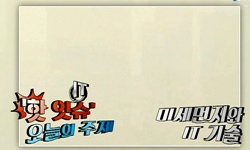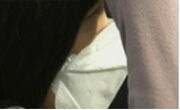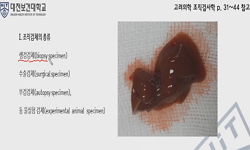Penetration of outdoor particulate matter(PM) is caused by the air flow from outside through infiltration, natural ventilation and mechanical ventilation. Therefore, recent deterioration of air pollution can increase the possibility of penetration of ...
http://chineseinput.net/에서 pinyin(병음)방식으로 중국어를 변환할 수 있습니다.
변환된 중국어를 복사하여 사용하시면 됩니다.
- 中文 을 입력하시려면 zhongwen을 입력하시고 space를누르시면됩니다.
- 北京 을 입력하시려면 beijing을 입력하시고 space를 누르시면 됩니다.
https://www.riss.kr/link?id=A100971410
- 저자
- 발행기관
- 학술지명
- 권호사항
-
발행연도
2015
-
작성언어
Korean
-
주제어
미세먼지 ; 입경 ; 실내외 농도비 ; 침기 ; Particulate matter ; Particle size ; I/O ratio ; Infiltration
-
KDC
540
-
등재정보
KCI등재,SCOPUS
-
자료형태
학술저널
- 발행기관 URL
-
수록면
137-144(8쪽)
-
KCI 피인용횟수
10
- DOI식별코드
- 제공처
- 소장기관
-
0
상세조회 -
0
다운로드
부가정보
다국어 초록 (Multilingual Abstract)
Penetration of outdoor particulate matter(PM) is caused by the air flow from outside through infiltration, natural ventilation and mechanical ventilation. Therefore, recent deterioration of air pollution can increase the possibility of penetration of outdoor PM indoors. In this study, indoor and outdoor size-resolved particle concentrations and the ratio under infiltration condition are analyzed to investigate the impact of particle size on the penetration and formation of indoor PM concentration. The particle number concentrations for PM0.3, 0.5, 1, 3, 5, 10㎛ were measured using optical particle counter(OPC) and ratio of indoor-to-outdoor(I/O) particle concentrations were calculated. Results suggested that outdoor PM could penetrate through outdoor airflow by infiltration and contribute to increase indoor PM concentrations. Calculated I/O ratio depended strongly on particle size. I/O ratio of small size particles (<0.5㎛) were around 1, and as the particle size increases, the I/O ratio tend to be decreased.
목차 (Table of Contents)
- Abstract
- 1. 서론
- 2. 침기량의 추정 및 실내·외 미세먼지 농도 측정
- 3. 침기 시 실내·외 미세먼지의 입경별 농도 분석
- 4. 결론
- Abstract
- 1. 서론
- 2. 침기량의 추정 및 실내·외 미세먼지 농도 측정
- 3. 침기 시 실내·외 미세먼지의 입경별 농도 분석
- 4. 결론
- REFERENCES
참고문헌 (Reference)
1 Kim, C. Y, "Underground structures condensation" 40 (40): 22-28, 2011
2 Jo, Y. M, "The role of the Korean Medical Association health effects caused by PM" 12 (12): 32-36, 2014
3 Kim. H. J, "The Evaluation of the Effects of Infiltration Reduction Methods on the Characteristics of Air Flow in a Buildings" Seoul National University 2015
4 Chen, C, "Review of relationship between indoor and outdoor particles: I/O ratio, infiltration factor and penetration factor" 45 (45): 275-288, 2011
5 Lee, H. S, "Relationships between indoor and outdoor air quality during the summer season in Korea" 31 (31): 1689-1693, 1997
6 Mosley, R. B, "Penetration of ambient fine particles into the indoor environment" 34 (34): 127-136, 2001
7 Tian, L, "Mathematical model of particle penetration through smooth/rough building envelop leakages" 44 (44): 1144-1149, 2009
8 Sul, K, "Management strategies of indoor PM2.5using the IIAQ model: effects of outdoor air quality and indoor sources" Seoul National University 2008
9 Chan, A. T, "Indoor–outdoor relationships of particulate matter and nitrogen oxides under different outdoor meteorological conditions" 36 (36): 1543-1551, 2002
10 Riley, W. J, "Indoor particulate matter of outdoor origin: importance of size-dependent removal mechanisms" 36 (36): 200-207, 2002
1 Kim, C. Y, "Underground structures condensation" 40 (40): 22-28, 2011
2 Jo, Y. M, "The role of the Korean Medical Association health effects caused by PM" 12 (12): 32-36, 2014
3 Kim. H. J, "The Evaluation of the Effects of Infiltration Reduction Methods on the Characteristics of Air Flow in a Buildings" Seoul National University 2015
4 Chen, C, "Review of relationship between indoor and outdoor particles: I/O ratio, infiltration factor and penetration factor" 45 (45): 275-288, 2011
5 Lee, H. S, "Relationships between indoor and outdoor air quality during the summer season in Korea" 31 (31): 1689-1693, 1997
6 Mosley, R. B, "Penetration of ambient fine particles into the indoor environment" 34 (34): 127-136, 2001
7 Tian, L, "Mathematical model of particle penetration through smooth/rough building envelop leakages" 44 (44): 1144-1149, 2009
8 Sul, K, "Management strategies of indoor PM2.5using the IIAQ model: effects of outdoor air quality and indoor sources" Seoul National University 2008
9 Chan, A. T, "Indoor–outdoor relationships of particulate matter and nitrogen oxides under different outdoor meteorological conditions" 36 (36): 1543-1551, 2002
10 Riley, W. J, "Indoor particulate matter of outdoor origin: importance of size-dependent removal mechanisms" 36 (36): 200-207, 2002
11 Hussein, T, "Indoor aerosol modeling: Basic principles and practical applications" 8 (8): 23-34, 2008
12 Cha, D. W, "Indoor Air Pollution" Kimoondang 78-, 2007
13 Lee, J. T, "Domestic cases of epidemiological studies on health effects PM" 129-142, 2003
14 Ling, W, "Direct numerical simulation of a three-dimensional temporal mixing layer with particle dispersion" 358 : 61-85, 1998
15 Yang, W. H, "Determinants of residential indoor and transportation activity times in Korea" 21 : 310-316, 2011
16 Thatcher, T. L, "Deposition, resuspension, and penetration of particles within a residence" 29 (29): 1487-1497, 1995
17 Guo, H, "Characterization of particle number concentrations and PM2. 5 in a school: influence of outdoor air pollution on indoor air" 17 (17): 1268-1278, 2010
18 Lee, K. H, "A Study on Interior Finishing Trends of the Current Large-size Office Buildings in Seoul" 17 (17): 3-10, 2001
동일학술지(권/호) 다른 논문
-
- 대한건축학회
- 한균(Han, Kyun)
- 2015
- KCI등재,SCOPUS
-
친환경 파사드 설계지원도구를 통한 오피스의 자연채광 최적화
- 대한건축학회
- 박정대(Park, Jung-Dae)
- 2015
- KCI등재,SCOPUS
-
- 대한건축학회
- 박인석(Park, In-Seok)
- 2015
- KCI등재,SCOPUS
-
메를로-퐁티의 현상학적 `몸의 공간`에 의한 공간사옥 연구
- 대한건축학회
- 형형칠(Hyung, Hyung-Chir)
- 2015
- KCI등재,SCOPUS
분석정보
인용정보 인용지수 설명보기
학술지 이력
| 연월일 | 이력구분 | 이력상세 | 등재구분 |
|---|---|---|---|
| 2022 | 평가예정 | 계속평가 신청대상 (등재유지) | |
| 2017-01-01 | 평가 | 우수등재학술지 선정 (계속평가) | |
| 2013-01-01 | 평가 | 등재학술지 유지 (등재유지) |  |
| 2011-03-25 | 학술지명변경 | 한글명 : 대한건축학회논문집 -> 대한건축학회논문집 계획계외국어명 : Journal of the Architectural Institute of Korea -> Journal of the Architectural Institute of Korea Planning & Design |  |
| 2010-01-01 | 평가 | 등재학술지 유지 (등재유지) |  |
| 2008-01-01 | 평가 | 등재학술지 유지 (등재유지) |  |
| 2006-08-02 | 학술지명변경 | 외국어명 : Journal of the Architectural Institute of Korea, Structure&Construction -> Journal of the Architectural Institute of Korea |  |
| 2006-01-01 | 평가 | 등재학술지 유지 (등재유지) |  |
| 2005-10-14 | 학술지명변경 | 한글명 : 대한건축학회논문집 구조계 -> 대한건축학회논문집 |  |
| 2004-01-01 | 평가 | 등재학술지 유지 (등재유지) |  |
| 2001-07-01 | 평가 | 등재학술지 선정 (등재후보2차) |  |
| 1999-01-01 | 평가 | 등재후보학술지 선정 (신규평가) |  |
학술지 인용정보
| 기준연도 | WOS-KCI 통합IF(2년) | KCIF(2년) | KCIF(3년) |
|---|---|---|---|
| 2016 | 0.38 | 0.38 | 0.38 |
| KCIF(4년) | KCIF(5년) | 중심성지수(3년) | 즉시성지수 |
| 0.41 | 0.4 | 0.742 | 0.11 |






 DBpia
DBpia





